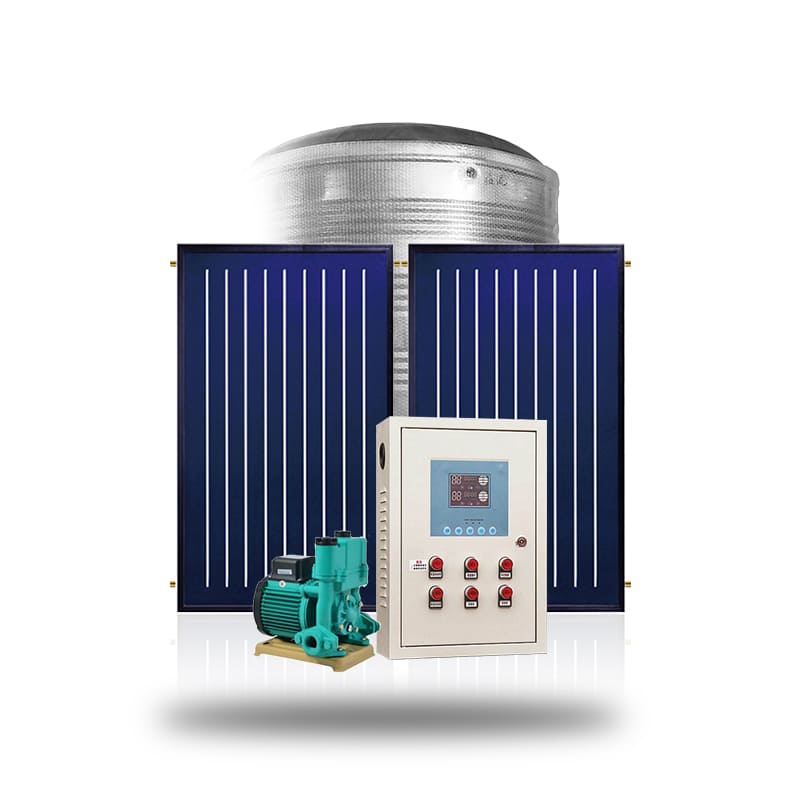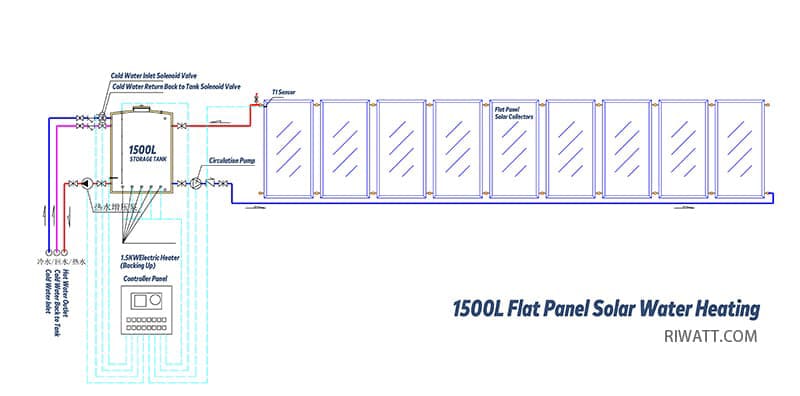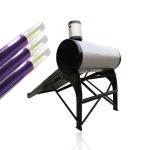Installing a Reliable Solar Power Water Heating System in the Turks and Caicos Islands
RIWATT is excited to plan the installation of three sets of 1,500 L solar power water heating systems for a client in the Turks and Caicos Islands. This blog post outlines the design considerations, working principle, system features, and maintenance tips to ensure long-term performance in tropical coastal environments.
Local Climate Conditions
The project site presents unique environmental challenges:
Summer season: June to October, with temperatures between 29 °C and 32 °C.
Other seasons: 27 °C to 29 °C.
Climate: Tropical savanna with an average annual temperature of 27 °C.
Rainfall: Relatively low at around 750 mm per year.
Sunlight: Over 350 sunny days annually.
Wind: Up to 280 km/h (Beaufort scale level 17, hurricane strength).
Proximity to the sea: About 100 m from the coastline, requiring strong anti-rust and anti-corrosion protection.
These conditions make it essential to design a robust and efficient solar power water heating system that can withstand extreme weather while providing stable hot water supply.
Solar Power Water Heating System System Information
| Serial No. | Items | Description | Quantity |
| 1 | Flat Panel Solar Collectors | 9 pcs × 2 m² glazed flat plate (total 18 m²) | 9 |
| 2 | SUS 304 Stainless Steel Water Tank | 1 × 1500 L 304L stainless steel, PU-insulated | 1 |
| 3 | Flat Panel Solar collector Bracket | Anti-rust aluminum alloy stand, hurricane-rated | 3 |
| 4 | Backup Heating Element | 4 × 2 kW / 115 V electric elements (total 8 kW) | 4 |
| 5 | 316L Stainless Steel Piping | 316L EPDM stainless hoses | 80 |
| 6 | Circulation Pump | 115V 60HZ | 2 |
| 7 | Hot Water Outlet Pump | 115V 60HZ | 2 |
| 8 | Centrial Controlling System | Central 115 V controller with sensors and pump relay | 1 |
| 9 | Filter Valve | 3/4” | 2 |
| 10 | Ball Valve | 3/4” | 6 |
| 11 | Ball Valve | 1” | 3 |
| 12 | Stainless Steel Air Vent | 3/4” | 2 |
| 13 | Copper TEE valve | 3/4”* 3/4”*3/4” | 2 |
| 14 | Solar Panel Collector Connector | 22*22mm | 16 |
| 15 | Solar Panel Collector Seal | 22mm*3/4” | 6 |
| 16 | Teflon Tape | net weight 7g * 10m * 0.2mm thick * 2cm wide | 30 |
| 17 | Al. Foil Tape | Model: 0.15mm thick * 50m | 30 |
Design Overview
When starting the project, we first evaluate the system type: pre-heated, non-pressurized, or high-pressure.
For this project, a non-pressurized solar water heating system was chosen due to its:
Cost-effectiveness compared to high-pressure systems.
Direct water heat exchange, which increases heating efficiency.
Simpler installation and maintenance, while ensuring reliable performance.
Although high-pressure systems provide stable and pressurized water, the higher cost makes non-pressurized systems a more practical choice for this application.
System Design Parameters
Target: Heat 1,000 L of water from 18–25 °C to an average of 55–60 °C.
Collector requirement: 8 flat plate solar collectors of 2 m² each.
Client daily demand: 1,500 L/day → recommend 9 solar collectors to ensure sufficient capacity along with auxiliary components for optimal performance.
Working Principle of Flat Plate Non-Pressurized Solar Water Heating System
Heat Absorption
The flat plate solar collector uses a high-efficiency selective absorber layer, copper or aluminum pipes, and insulation. Sunlight converts to heat, warming the water in the collector.
Natural Circulation (Thermosiphon Principle)
Heated water rises naturally into the insulated storage tank while cooler water flows down into the collector. This thermosiphon circulation works automatically without pumps.
Heat Storage and Usage
Heated water is stored in an insulated tank for bathing, cleaning, and other applications. During cloudy days or nighttime, an optional electric heater ensures a stable hot water supply.
System Features
Non-pressurized design: Low-pressure, open-to-atmosphere tank for safety and reliability.
Simple structure: Easy maintenance and long-term durability.
Ideal for tropical climates: Designed for areas with abundant sunshine and high temperatures.
Maintenance Guidelines
Regular Cleaning of Collectors
Clean absorber surfaces every 3–6 months; coastal environments may require more frequent cleaning to remove salt deposits.
Inspect Tank and Piping
Check for leaks, corrosion, or limescale. Professional descaling may be needed.
Check Insulation
Ensure insulation is intact to minimize heat loss.
Ventilation and Air Release
Proper venting prevents airlocks that could affect natural circulation.
Auxiliary Heater Inspection
If included, check the electric heater regularly for power and functionality.
Support Frame and Anti-Corrosion
Inspect brackets, screws, and coatings to ensure resistance to coastal corrosion.
Seasonal Maintenance
During long inactivity, drain or maintain minimal water level to prevent freezing or water quality deterioration.
By carefully designing and maintaining a solar power water heating system, RIWATT ensures efficient, long-lasting, and reliable hot water supply even in the extreme tropical conditions of the Turks and Caicos Islands.





Leave A Comment
Your email address will not be published.